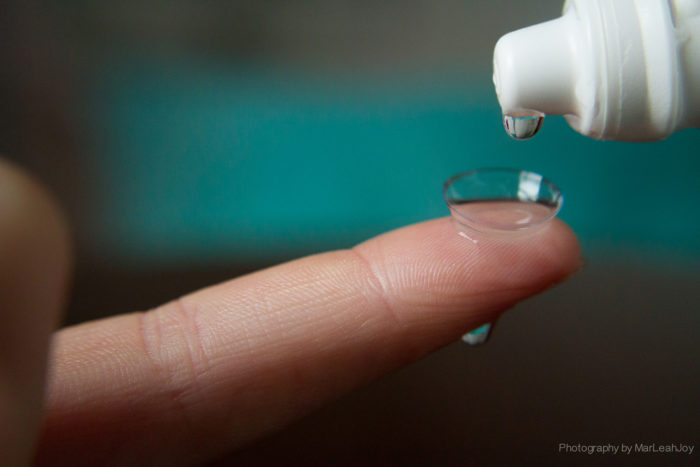Differences Between Saline Solution And Contact Solution For Eyes
Contact lenses are one of the most popular and safe methods of correcting vision problems. In fact, more than 30 million Americans in the United States alone use contacts to see correctly on a daily basis.
However, naturally produced oil, skin cells, microorganisms, and makeup can accumulate on contacts over time, making proper cleaning and storage essential for good eye health. Because contact lenses sit directly on the cornea, it is fairly easy for bacteria and foreign objects to become infected over time, which can lead to very serious issues, like bacterial keratitis.
Not all contact cleaning and storage agents are created equal, so we’ve broken down everything you need to know about the two most common solutions you’ll likely encounter: saline solution and contact solution.
Of course, if you have specific questions about your eye care, it’s always best to contact your eye care professional for a personal consultation.
What Is Saline Solution?
Saline solution is a simple saltwater solution that can be used to rinse off contact lenses before inserting them into your eyes. As the phrase ‘simple solution’ might insinuate, saline does not contain any cleaning agents and should never be relied on to disinfect, clean, or store contacts for an extended period of time.
And, if using a saline solution, be sure to purchase a commercially produced product and do not attempt DIY versions of the solution, as many ‘made at home’ versions have been linked to serious corneal infections, among other health issues.
What Is Contact Solution?
Contact solution is a commercially produced and distributed chemical solution. It exists solely for the purpose of disinfecting and cleaning contact lenses. Though different brands offer different specific ingredients, most contain a preservative, a buffer, a binding agent, and a wetting agent.
When combined, these elements efficiently and effectively remove buildup and bacteria that can contaminate contacts. Contact solution is also a safe liquid for storing contact lenses over time.

Photo Credit: MarLeah Cole via Flickr CC2.0
What’s The Difference?
There are several key differences between saline solution and contact solution, and it’s important to know the differences between the two for proper application.
| Saline Solution | Contact Solution | |
| Ingredients | Salt and water | Commercially produced ingredients: preservative, buffer, binding agent, wetting agent |
| Production | Can be produced at home; not advised for use with contacts. If using, commercially produced saline is recommended. | Cannot be produced at home; contact solution is commercially produced by a variety of brands. |
| Use | Rinsing contacts before insertion into the eye | Cleaning, disinfecting, and sanitizing lenses |
| Storage | Not to be used for long-term storage | Approved for long-term lense storage |
Tips For Good Contact Lens Care
Proper care and handling are important for good eye health and to maintain the life of your contacts. Here are a few tips for good contact care:
- Wash, rinse, and dry hands before handling your contacts.
- Handle contacts with your fingertips, no fingernails or other objects, like tweezers, to avoid tearing/damaging the lens.
- Check your lenses for debris, tears, etc. before inserting into your eye.
- Every contact product—whether it be saline, a true contact solution, or a multi-purpose solution—has an expiration date. Be sure to take note of these dates and dispose of products, if necessary.
- Contact containers should also be replaced every 30 days to prevent the build-up of bacteria that can contaminate lenses.
- Never use plain water, homemade saline, or any other unapproved solution to clean or store your lenses.
Contact Lens Do’s And Don’ts
Proper care and maintenance for your contacts will prevent damage to the lenses and help promote good eye health. Here are a few ‘dos’ and ‘don’ts’ to keep in mind:
| Do | Don’t |
| Only wear contacts for the length of time prescribed by your health care professional. | Attempt to ‘stretch’ the life of your contacts by wearing them for a longer amount of time than prescribed. |
| Use your contact solutions properly, and know the difference between saline and true contact solution. | Use saline as a substitute for contact solution. Saline should not be used to clean/disinfect lenses or for long-term storage. |
| Add new solution to your contact case every day. | Add new solution into the solution you’ve used previously. |
| Thoroughly rinse and dry your contact case after each use. | Continue to re-use your contact case before a thorough rinse and dry. |
| Take your contacts out if you ever feel discomfort or pain. | Sleep in your contacts unless you happened to have a pair that is approved for overnight use. |

